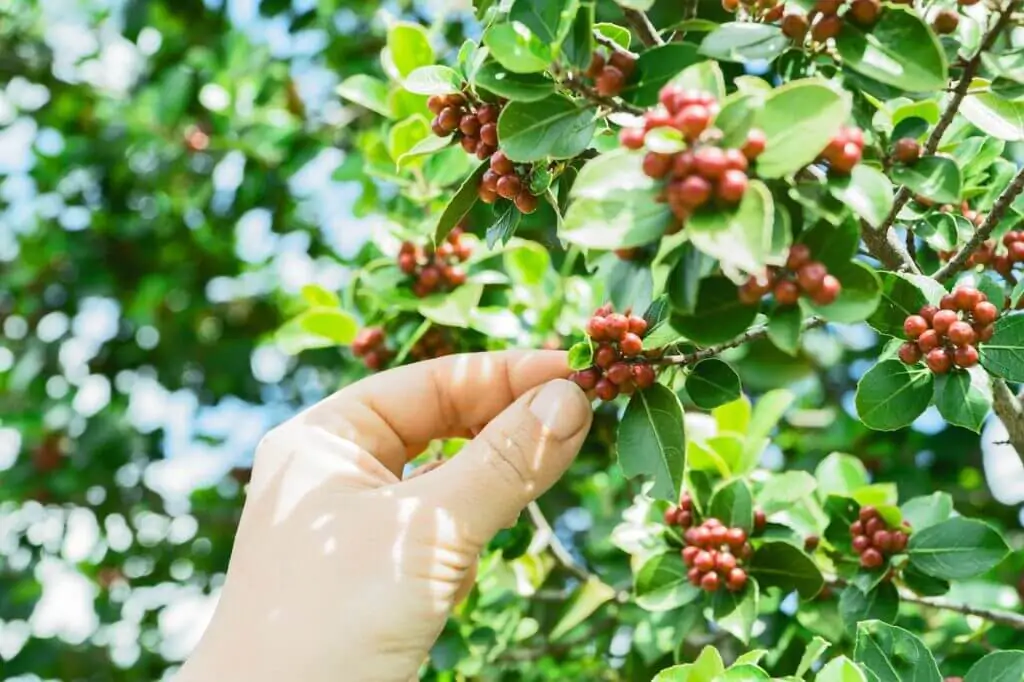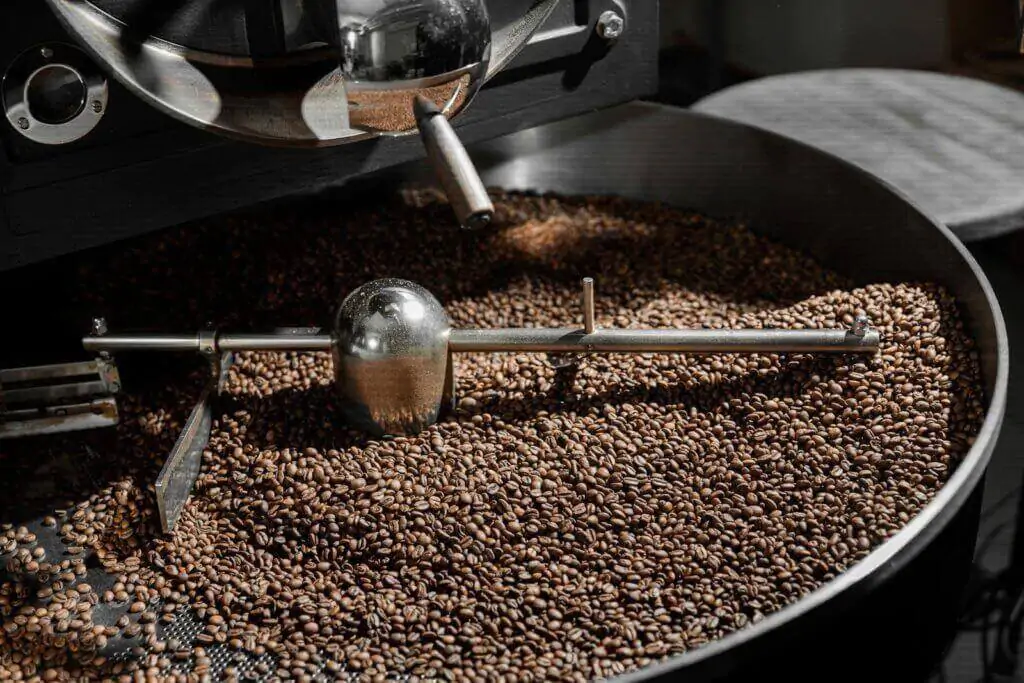While chocolate-covered coffee beans are a delicious and popular snack, you might have wondered, can you eat raw coffee beans too? Let’s find out.
The aroma of a roasted coffee bean is divine, but can you eat raw coffee beans? The answer is yes; both raw and roasted coffee beans are safe for consumption. With that said, raw coffee beans are an acquired taste.
Although you can eat raw coffee beans, they’re grassy with bitter and woody flavors. Many people find them unpalatable. Plus, because they’re so dense and hard, they’re difficult to chew and digest. It’s best to roast them first.
Coffee beans are not all the coffee tree has to offer; the coffee cherry is also edible. It has a sweet taste, often described as a combination of cranberry, hibiscus, cherry, and mango. The flesh of the fruit is consumed in many coffee-growing countries.
What Do Raw Coffee Beans Taste Like?
There are two primary definitions of “raw” regarding coffee beans. Firstly, a raw coffee bean can refer to the bean immediately after it’s been extracted from the coffee cherry. Secondly, the term can be used to describe the bean when it’s dried but not yet roasted.
Raw coffee beans exhibit a bitter and grassy flavor. While you may detect some subtle sweetness, this typically originates from the mucilage of the coffee cherry, not the bean itself.
The physical texture of raw coffee beans can also be less than appealing. They are notably hard to chew and may have a moist texture.

How Can You Eat Raw Coffee Beans
There are several ways to make eating raw and roasted coffee beans more palatable.
Roast The Coffee Beans

The roasting process will eliminate the grassy flavors, making way for more preferable chocolatey, nutty notes. Roasted coffee is also easier on your teeth. Learn more in our guide on how to roast coffee beans at home.
Add Chocolate, Honey, Or Caramel
All coffee is a little bitter; adding chocolate, honey, or caramel to the mix will cover the more astringent flavors of raw and roasted beans. Although these additives will make raw coffee more appetizing, the texture will still be hard.
Keep in mind that milk and dark chocolate contain caffeine, so ensure you monitor your caffeine consumption.
Add Coffee Grounds To Smoothies
You can use a coffee grinder, food processor, or a Vitamix to grind the coffee and then use it as an ingredient for your next milkshake or smoothie! Raw beans will complement the flavors of a green or fruit smoothie, while roasted coffee will go down a treat in a chocolate milkshake. Since green beans are so hard, soak them overnight first before grinding.
Insert The Coffee Beans Into The Fruit
Take a raw or roasted coffee bean and insert it into a grape or date; it’s better if it is seedless to spare you the extra effort. To make the green coffee easier to chew, you can soak the beans in water overnight.
The sweetness of the fruit will offset the bitterness of the coffee beans. Technically, coffee is a fruit too, but if you’re expecting a juicy treat when you bite into a bean, you’ll be disappointed.
Best Coffee Beans To Eat
Some coffee beans are better than others for eating. Below is a quick overview of some options.
1. Medium Or Dark Roasted Beans
If you’re going to eat coffee beans, opt for medium or dark-roasted beans. The longer the beans are roasted, the more the deeper, nuttier flavors emerge.
2. Arabica Coffee Beans
Arabica beans are typically more desirable than their Robusta counterparts due to their smoother, more complex flavor profile.
3. Flavored Coffee Beans
Some companies offer coffee beans that have been roasted and then flavored with various additives, such as vanilla, caramel, or cinnamon. These can be enjoyable to eat because the flavorings mask some of the bean’s natural bitterness.
4. Beans From High-Quality Producers
Like with coffee for brewing, the quality of the beans can vary widely based on where they’re grown and how they’re processed. If you’re going to eat coffee beans, you’ll probably enjoy beans from high-quality, reputable producers more than cheaper, lower-quality alternatives.
5. Chocolate-Covered Coffee Beans
Chocolate and coffee are a match made in heaven as the more pleasant coffee flavors are heightened, but the chocolate hides much of the bitterness. Chocolate-covered espresso beans are a delicious way to get a caffeine boost, along with all the health benefits of roasted coffee beans.
Of course, it’s important to consider the quality of the chocolate if you’re a coffee lover who wants to reap some potential health benefits. The darker the chocolate, the higher the antioxidant content.
Dark chocolate can be bitter, so if you have a sweet tooth, you’ll prefer milk chocolate. While you’ll lose some of the antioxidants, you still get to enjoy all the health benefits of coffee with a sweeter, more balanced taste.
6. Spiced Coffee Beans
If you have a more savory palate, you may enjoy chai-flavored coffee beans – think of it as an edible dirty chai latte. Pour your coffee beans into a bag and add some cloves, pepper, cinnamon, ginger, and cardamom; then give it a shake. You can mix the chai ingredients with the chocolate for an even more flavorful experience.
7. Coffee Cherries
Coffee cherries, or the fruit of the coffee plant, are slightly sweet, which counteracts the flavors of the unroasted beans. Be careful not to choke on the raw coffee beans inside.
If you don’t live in an area where coffee is harvested, getting your hands on coffee fruit can be tough — you can’t exactly order fresh produce over Amazon. Reaching out to your favorite barista at your local coffee shop may give you an in with a roaster who can help you get your hands on some coffee cherries. If you like this article, you might also be interested in our guide on snacks that go with coffee.
Can You Eat Raw Coffee Beans: FAQs
Do Raw Coffee Beans Have Caffeine?
Raw coffee beans contain caffeine. However, the amount of caffeine varies and depends on several factors, including the type of bean, where it was grown, and how it was processed.
Does Eating Coffee Beans Give You Energy?
The amount of caffeine in one regular cup of Joe is equivalent to about seven to eight coffee beans. The research found that your body’s ability to absorb caffeine increases when the beans are eaten, so this method of consuming coffee will perk you up quicker as it’s pure, undiluted java. Keep in mind that there are 18 calories per six grams of coffee eaten.
